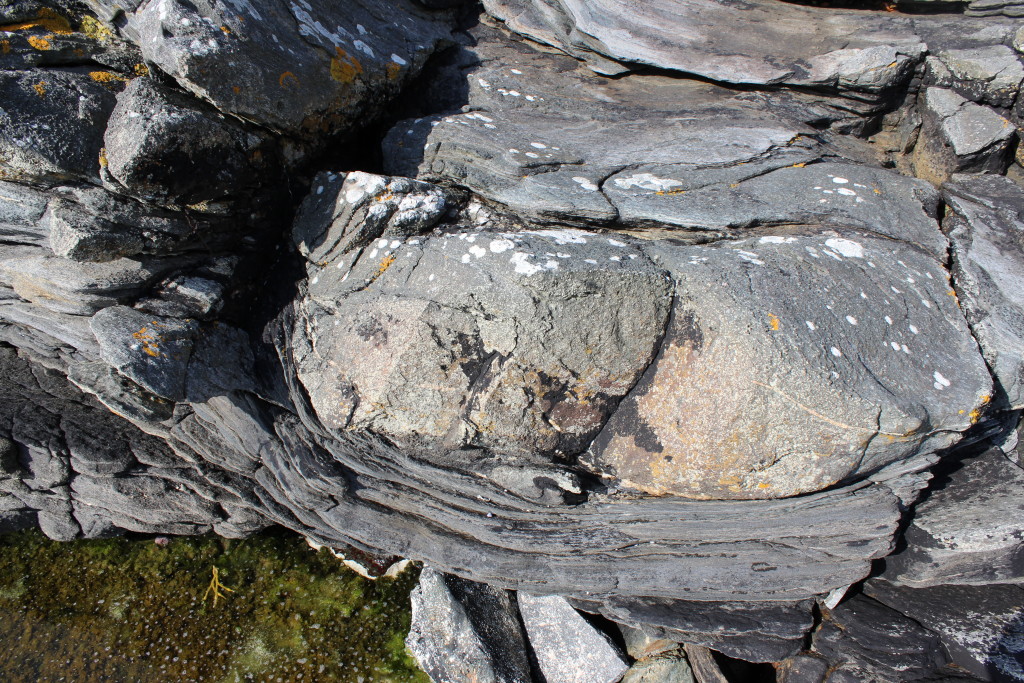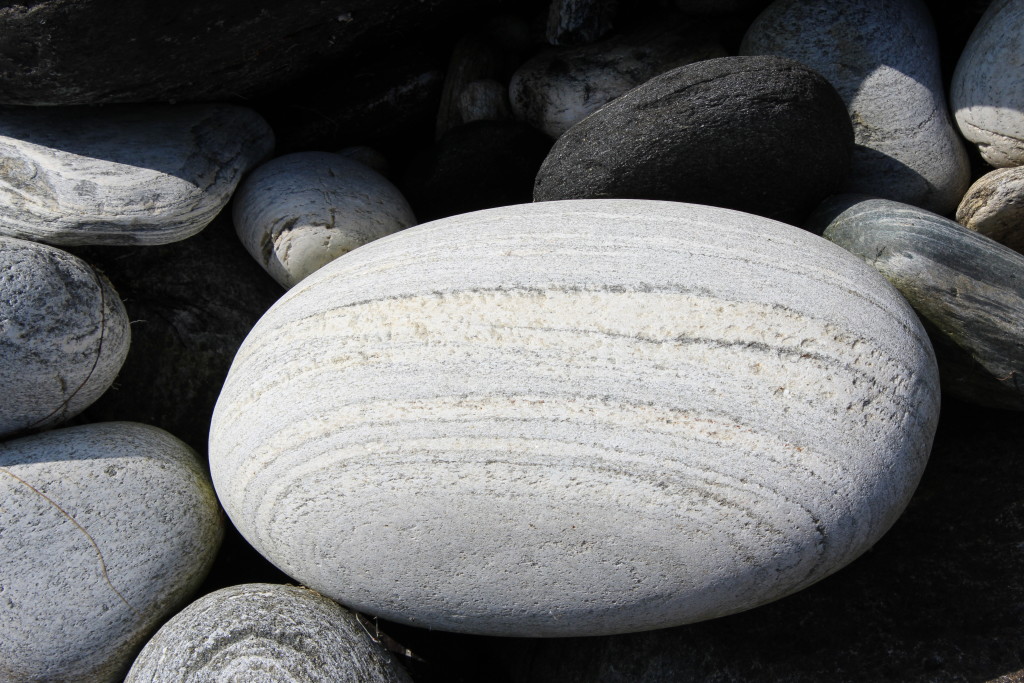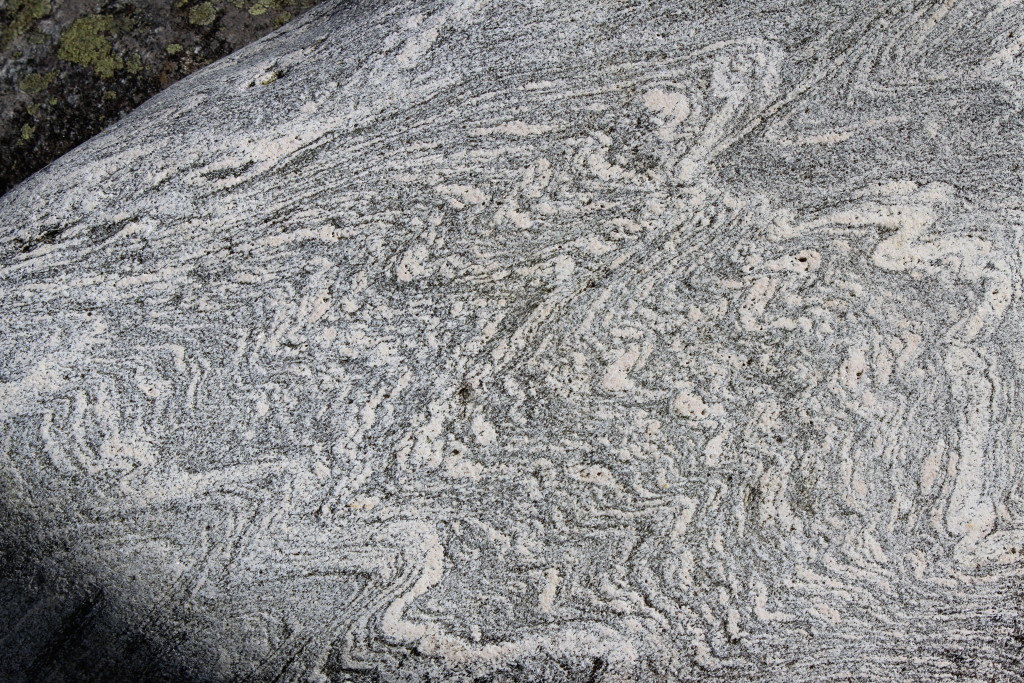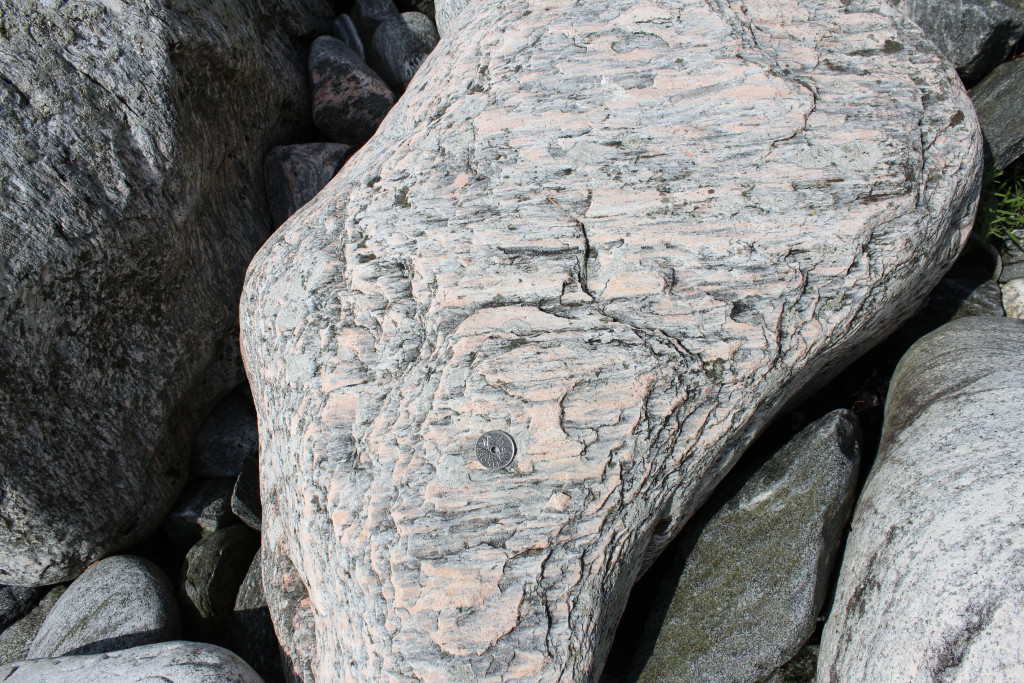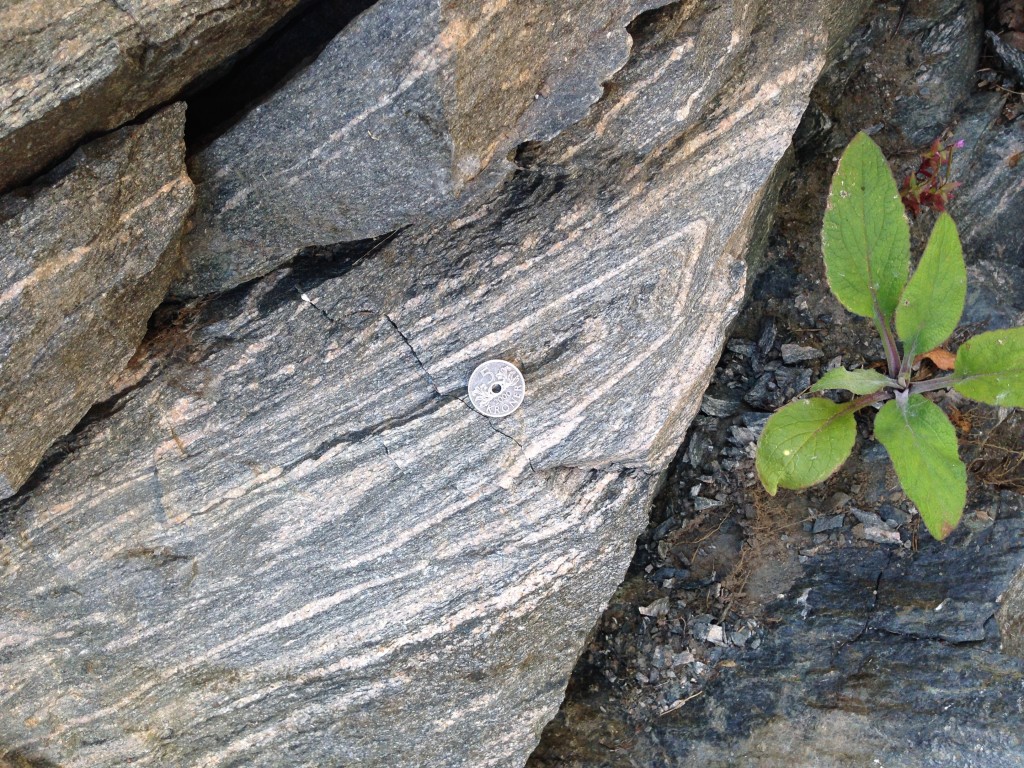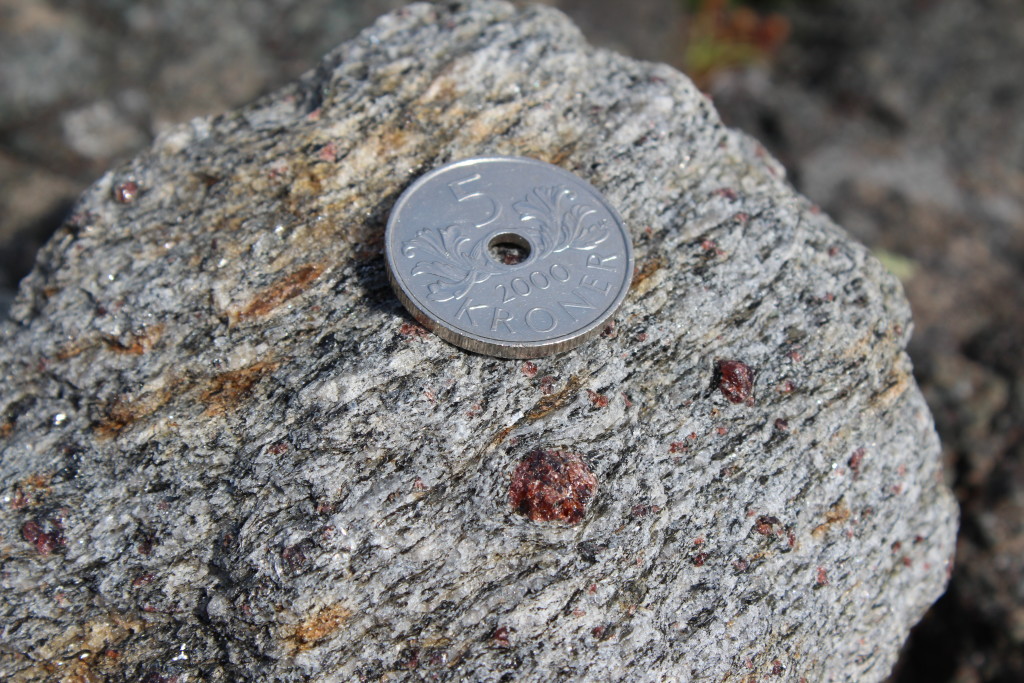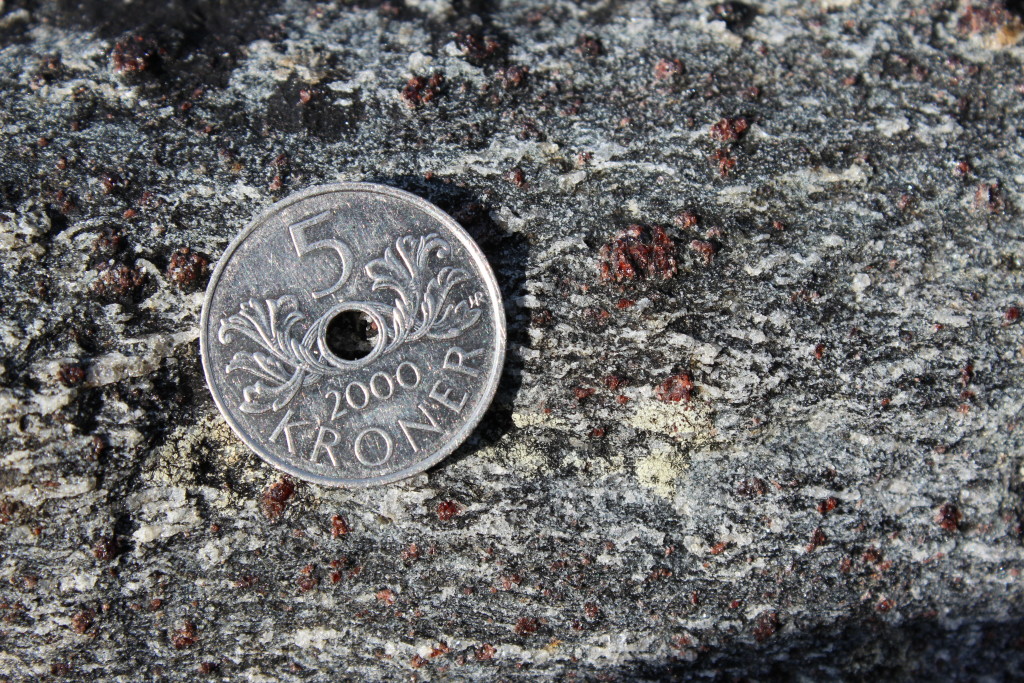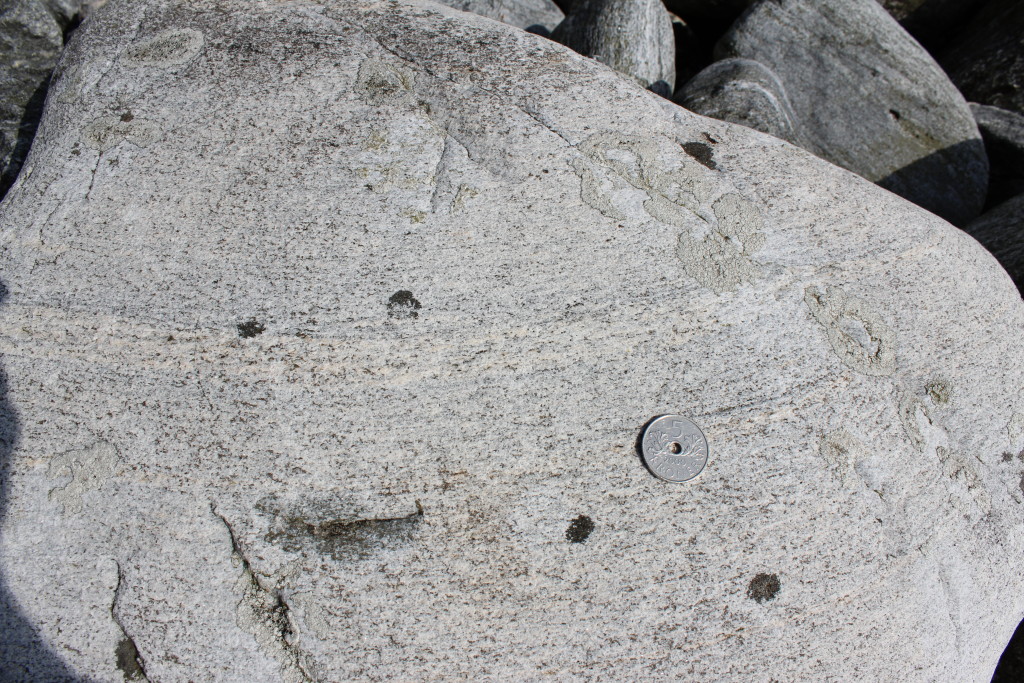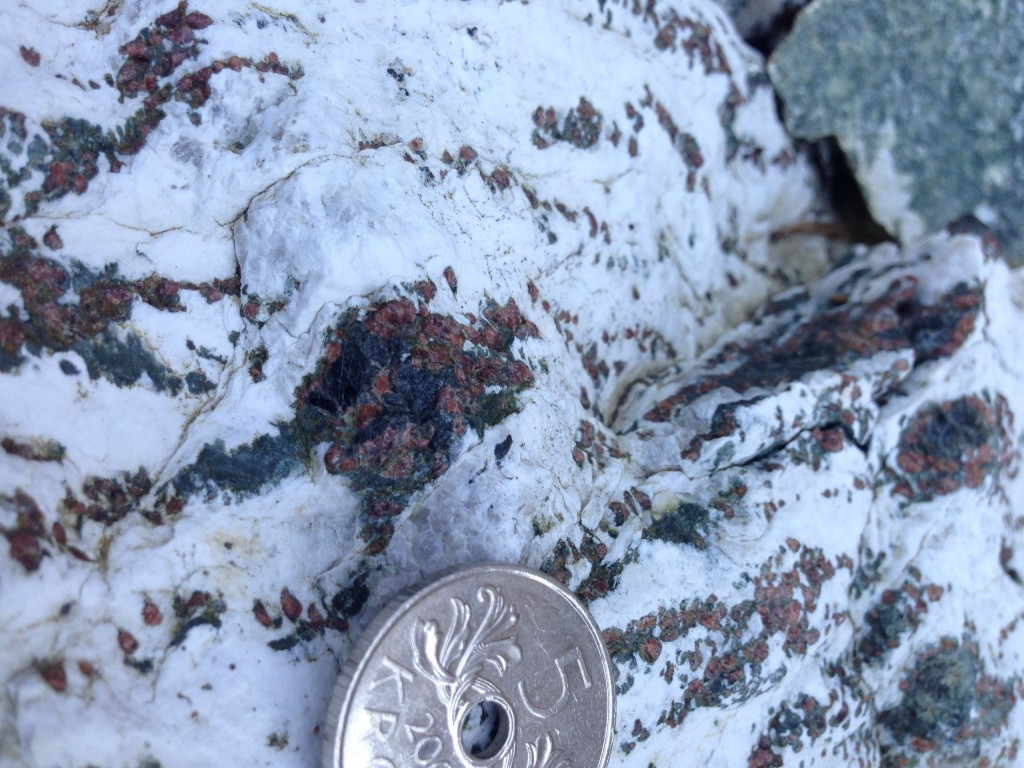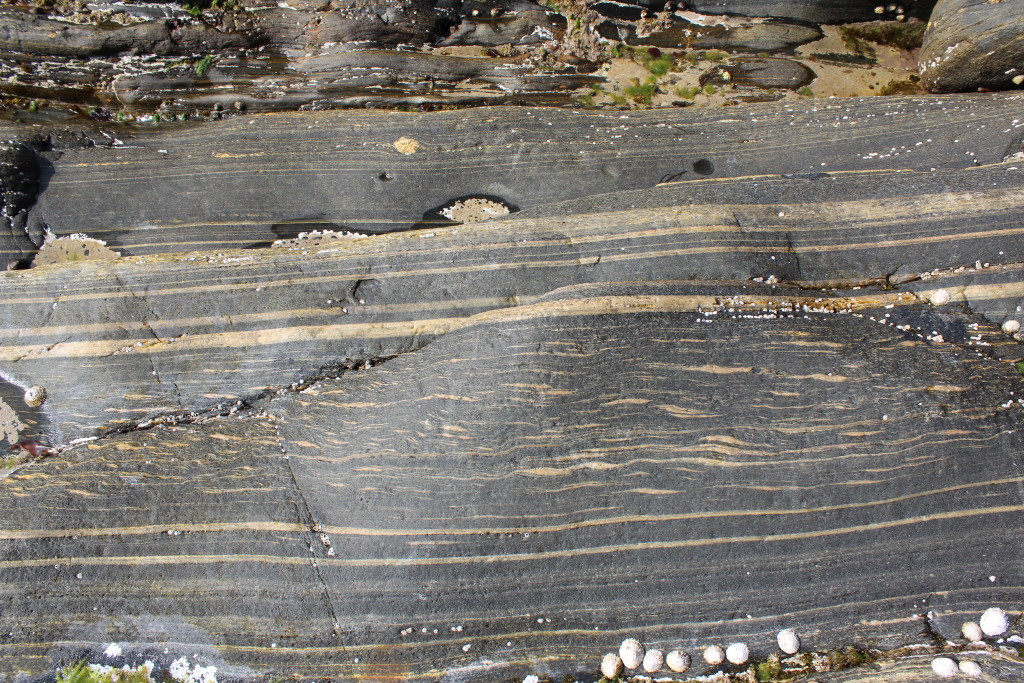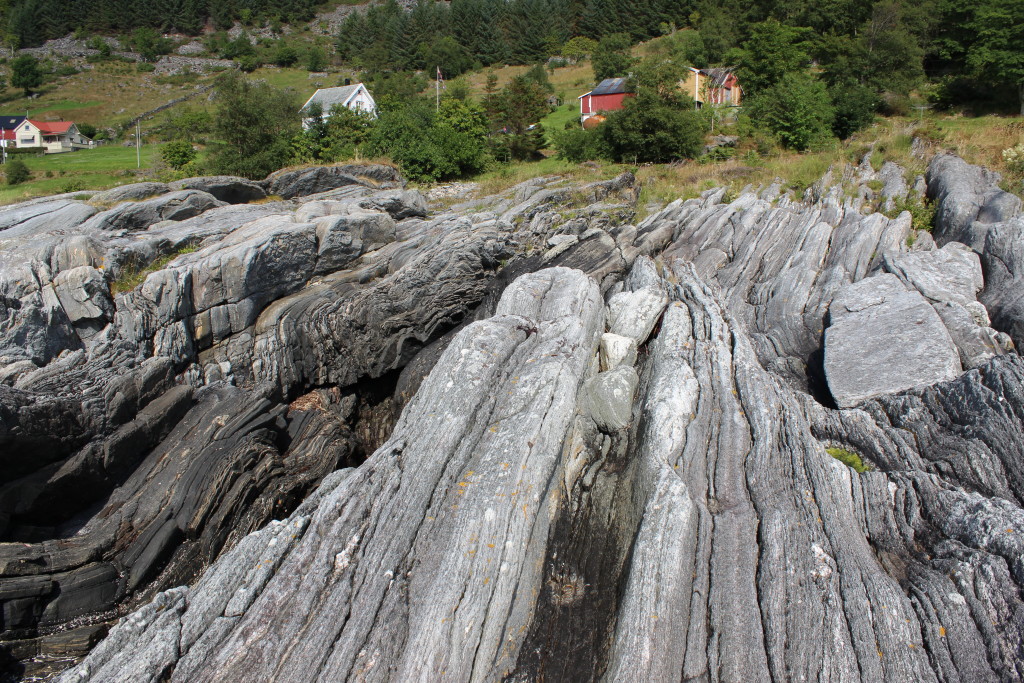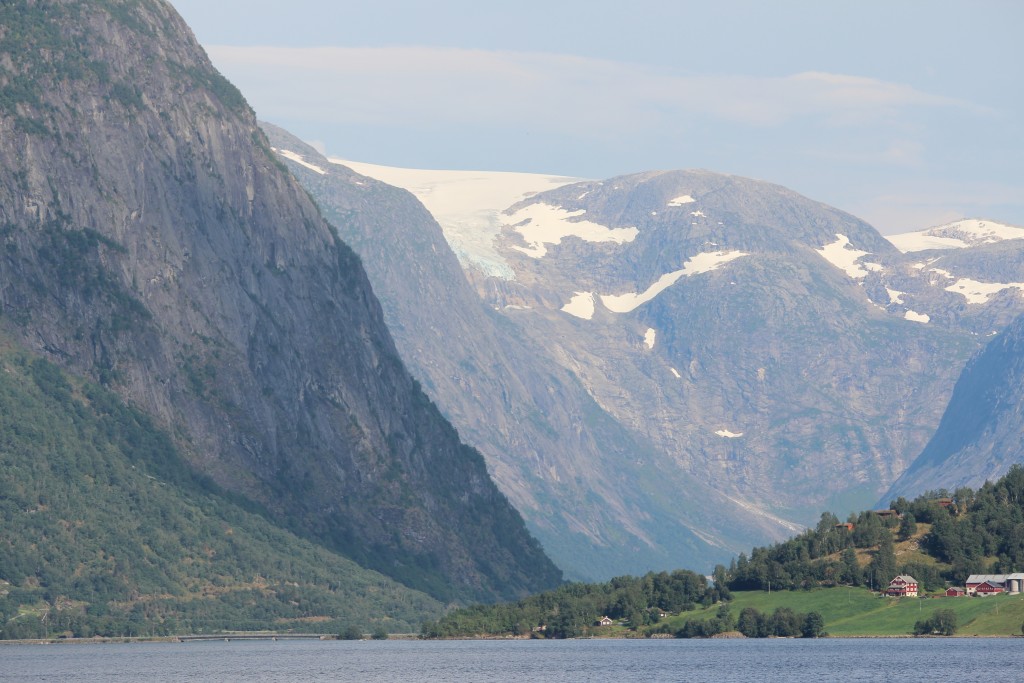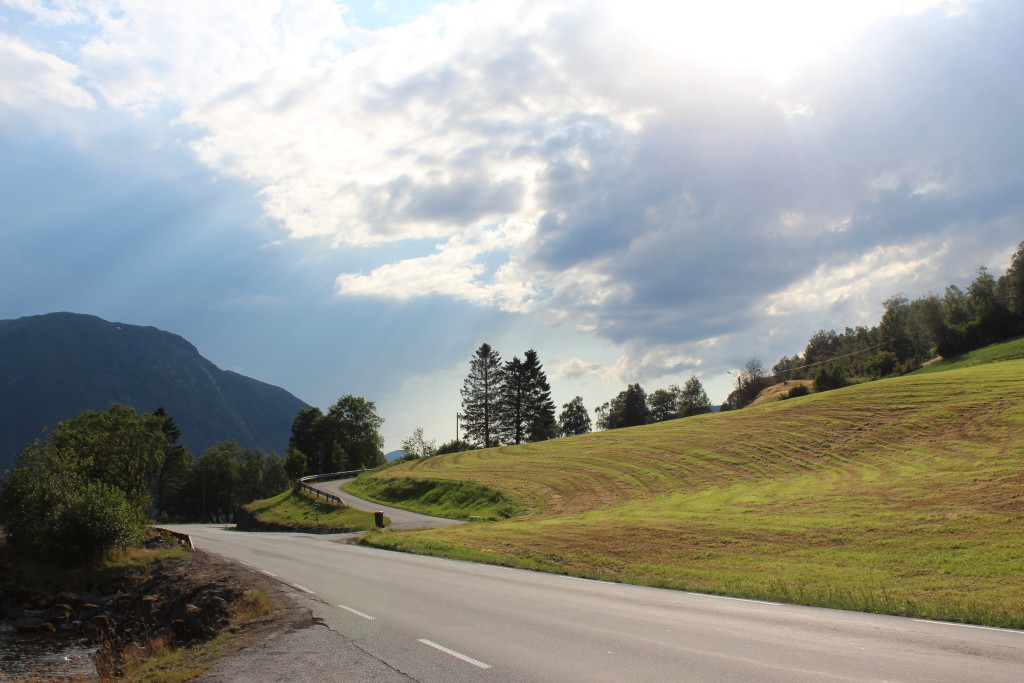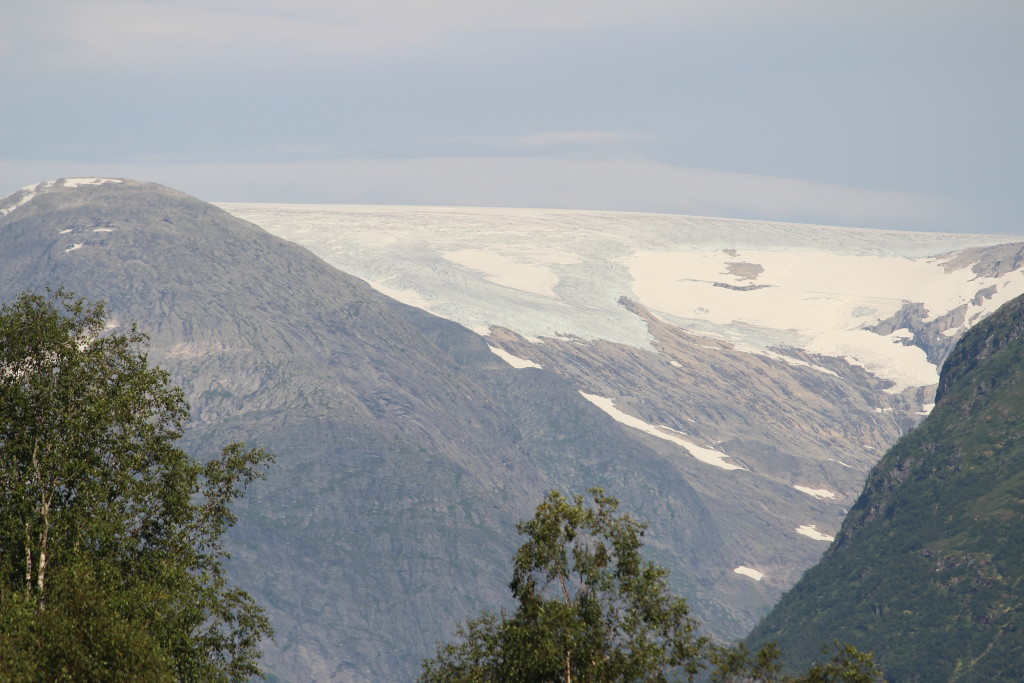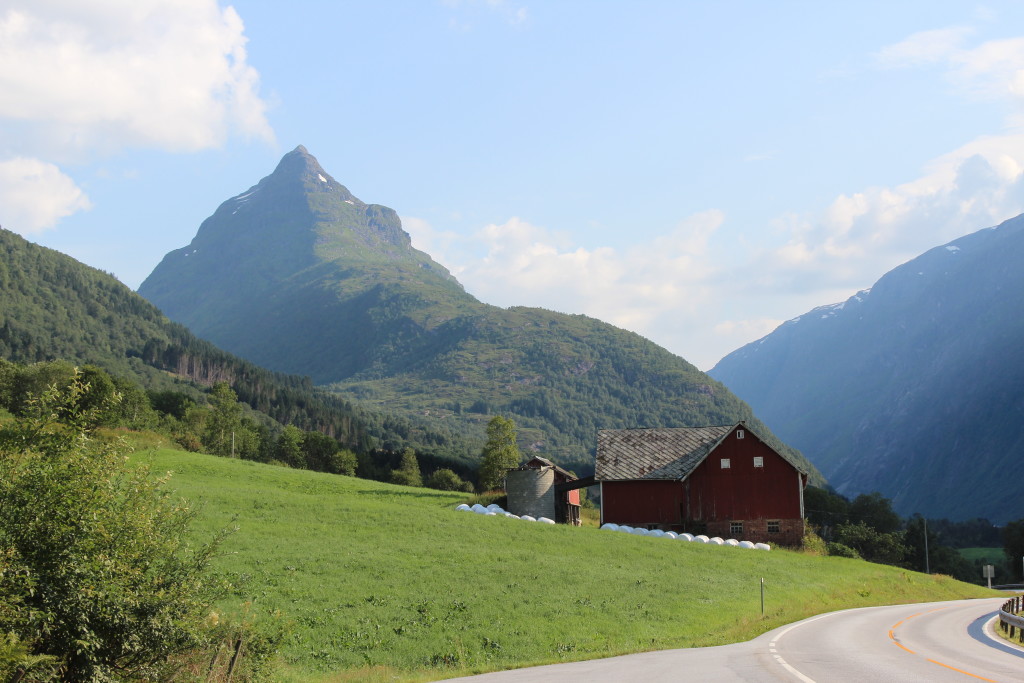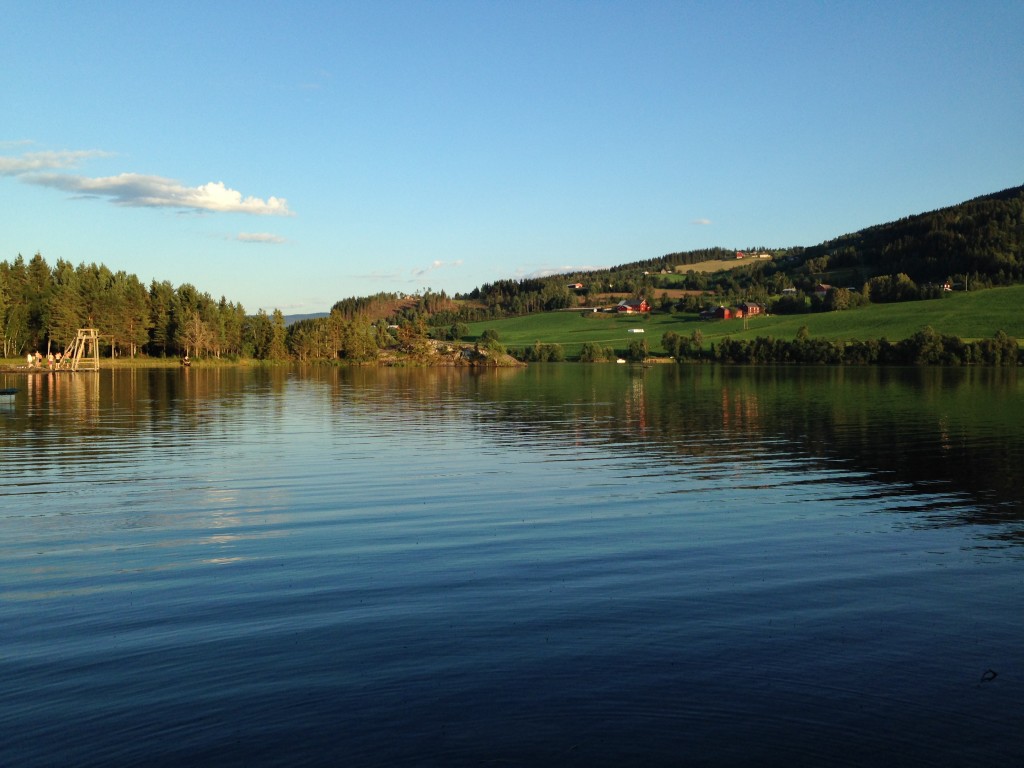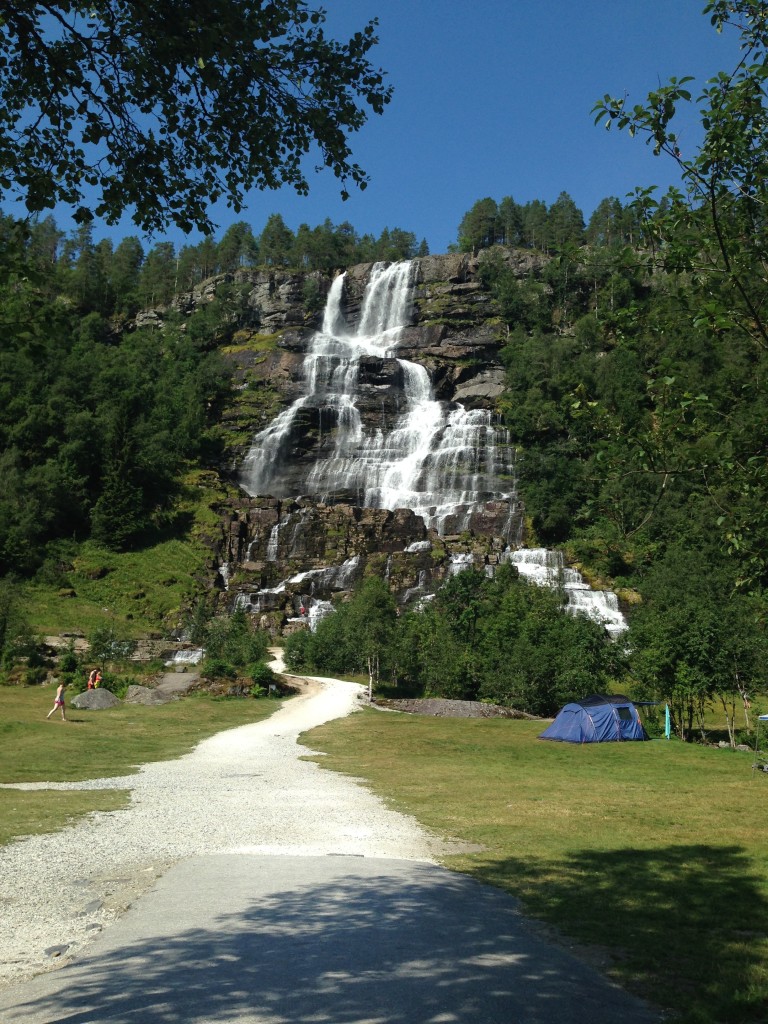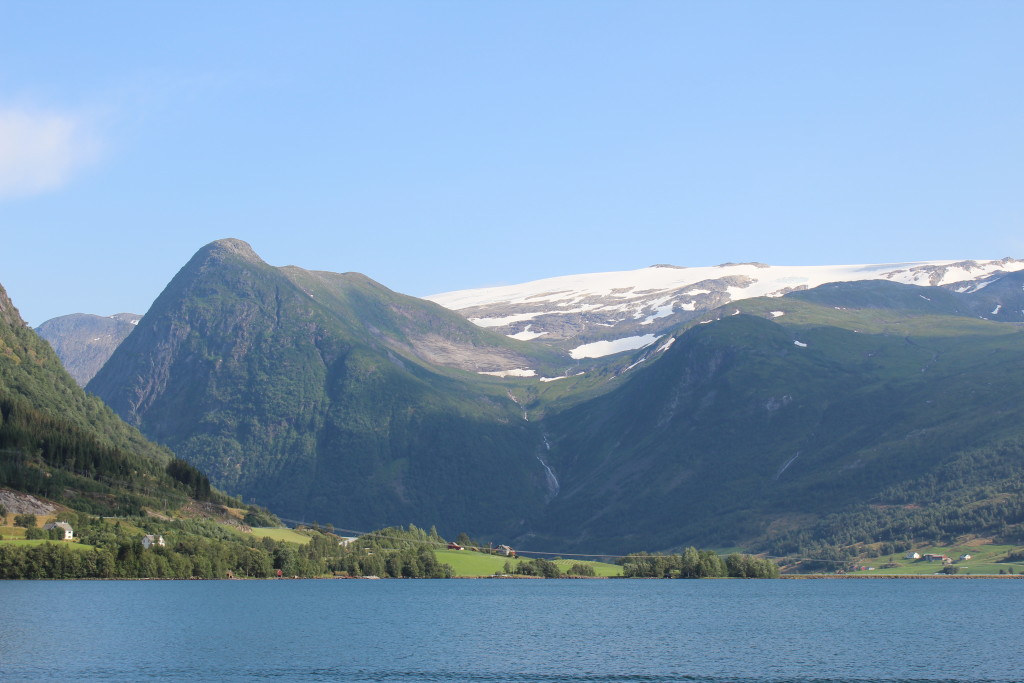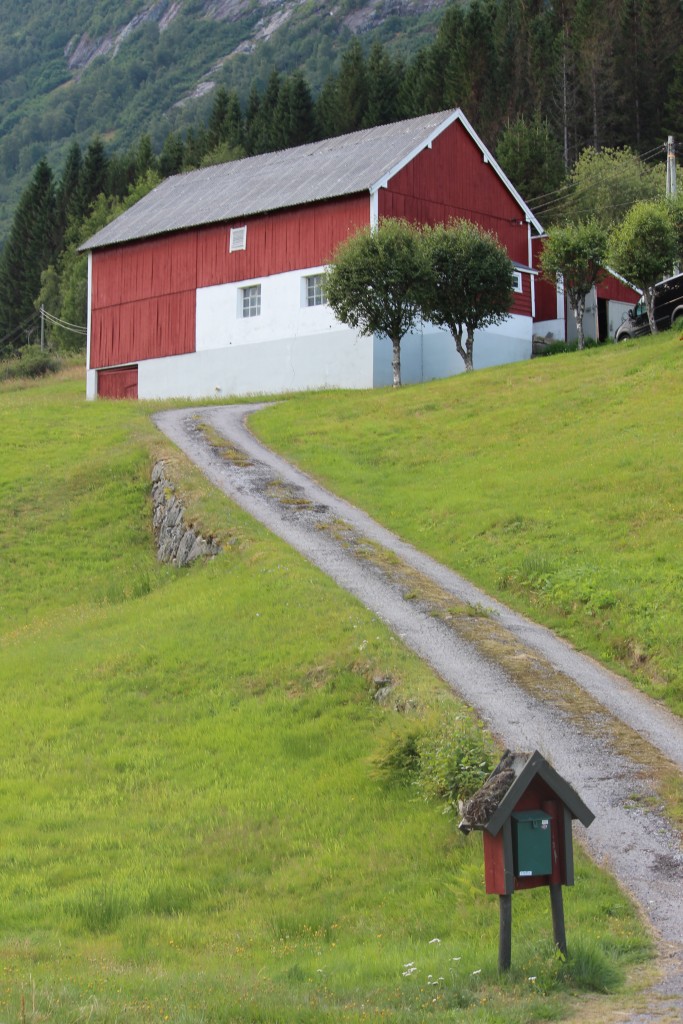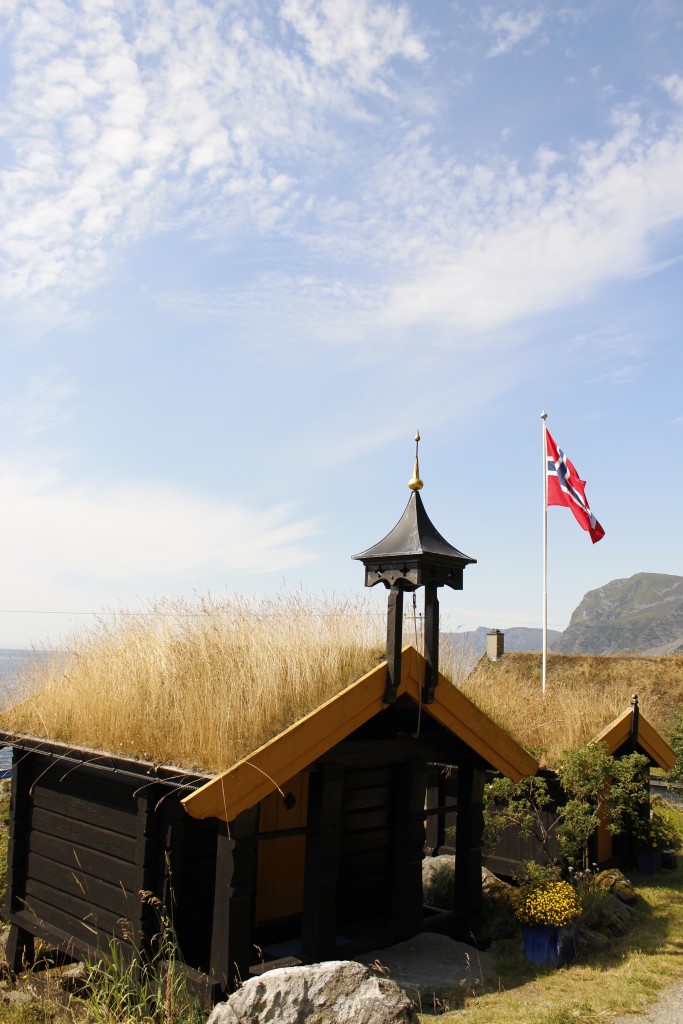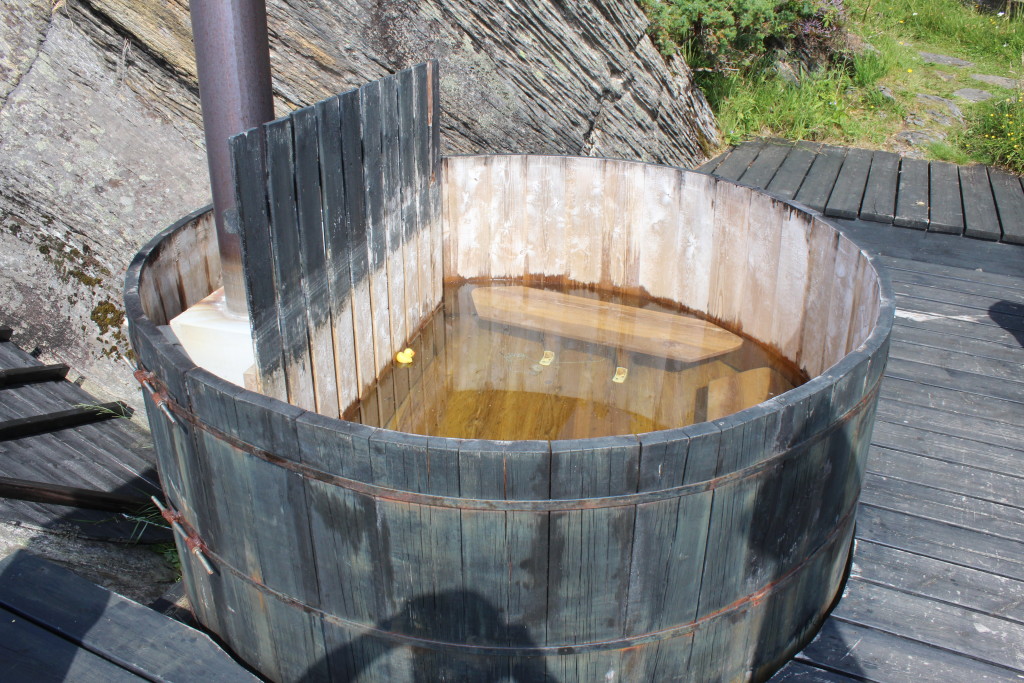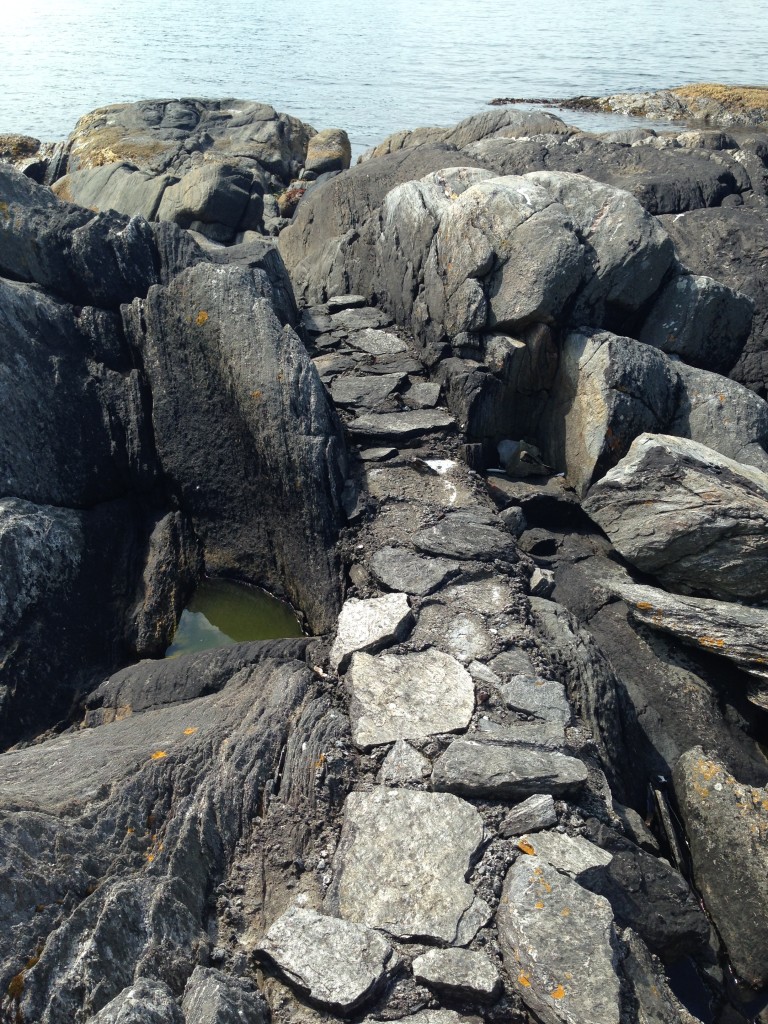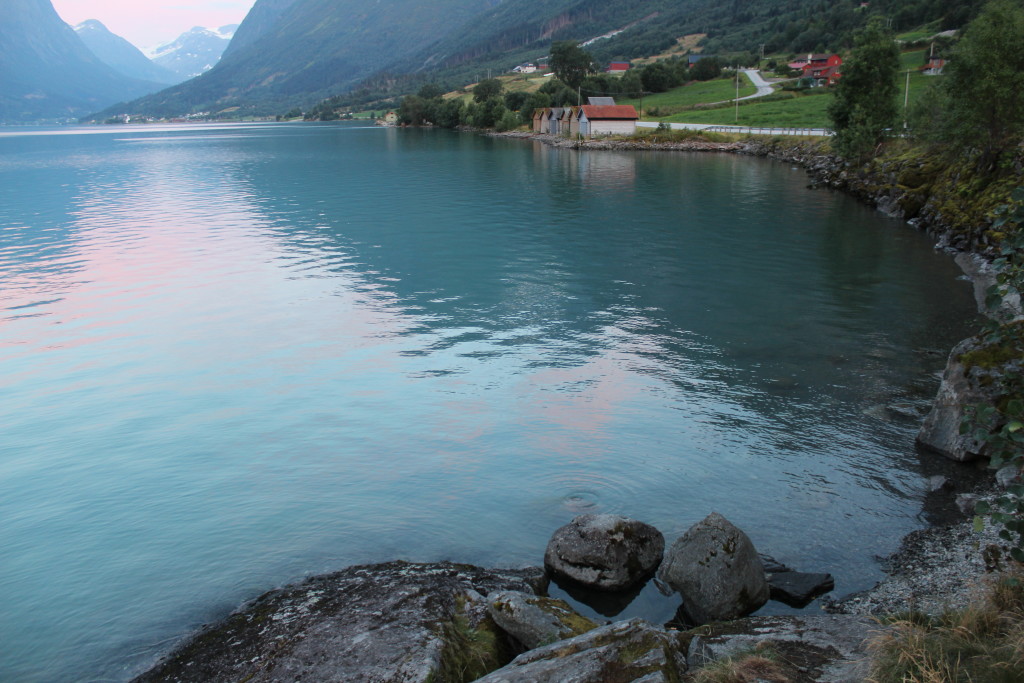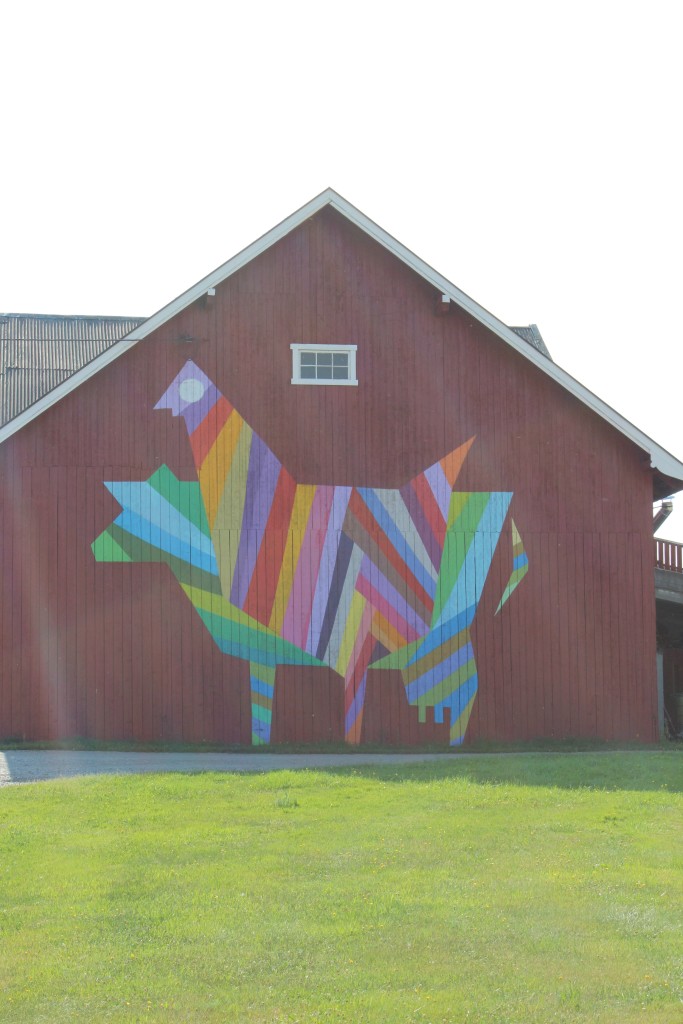Carl Hoiland is a Ph.D. Candidate at Stanford University studying tectonics of the Cordillera. This post (in two parts) comes from a trip he took while as an NSF GRFP GROW visiting researcher at Stockholm University. This is part II: the rocks (and peripherals).
Part I: a pilgrimage, can be seen here.
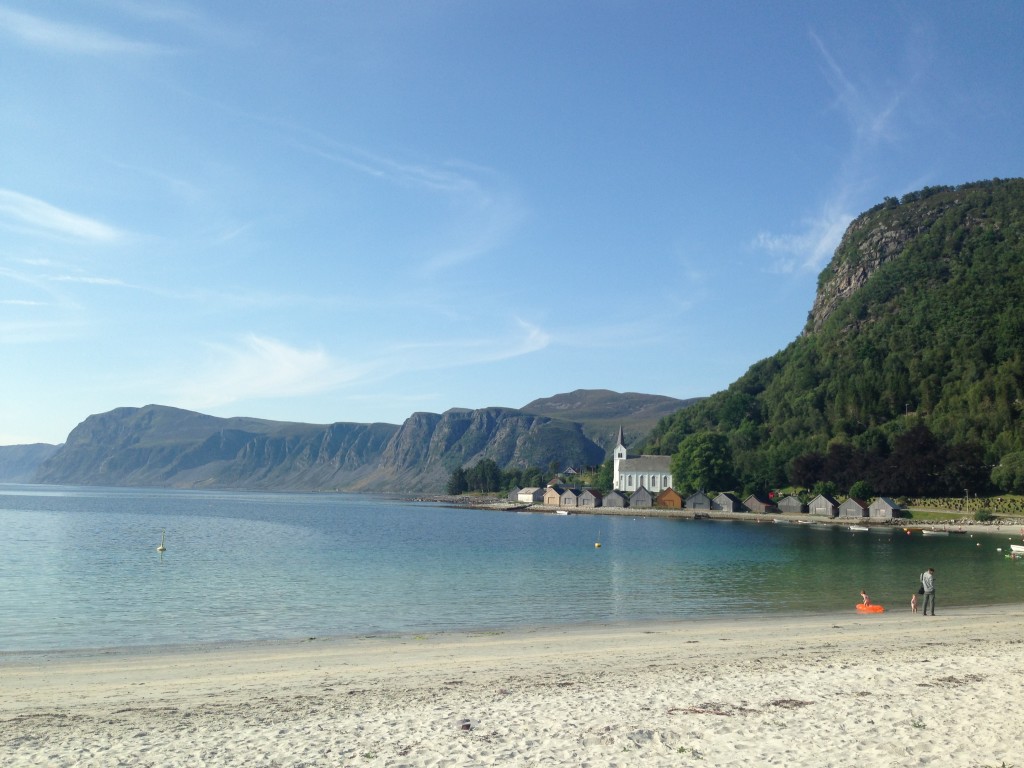
White sand beach in Selje, Norway (view is to the north). The coesite-eclogite locality is a short walk along the shore beyond the white chapel.
The Western Gneiss Region (WGR) of western Norway is spectacular in many regards. The landscape, sculpted by glaciers and ice sheets, is still undergoing post-glacial rebound (4 mm/yr measured uplift rate at Tromsø, on the coast, with rates upwards of 12 mm/yr in interior Scandinavia!, see Johansson et al., 2002). The rocks themselves are exceptional by any geologic standard, recording a polyphase deformational history which includes subduction to coesite (Smith, 1984) and diamond-stable (Dobrzhinetskaya et al 1995) depths during Caledonian underthrusting of Baltica under Laurentia in mid-Paleozoic time, followed by rapid extensional exhumation back to shallow levels.
Below are some photos and brief descriptions of rock types found at Selje, Norway (One of the first two coesite-eclogite localities ever discovered), followed by images of the landscape and scenery seen regionally.
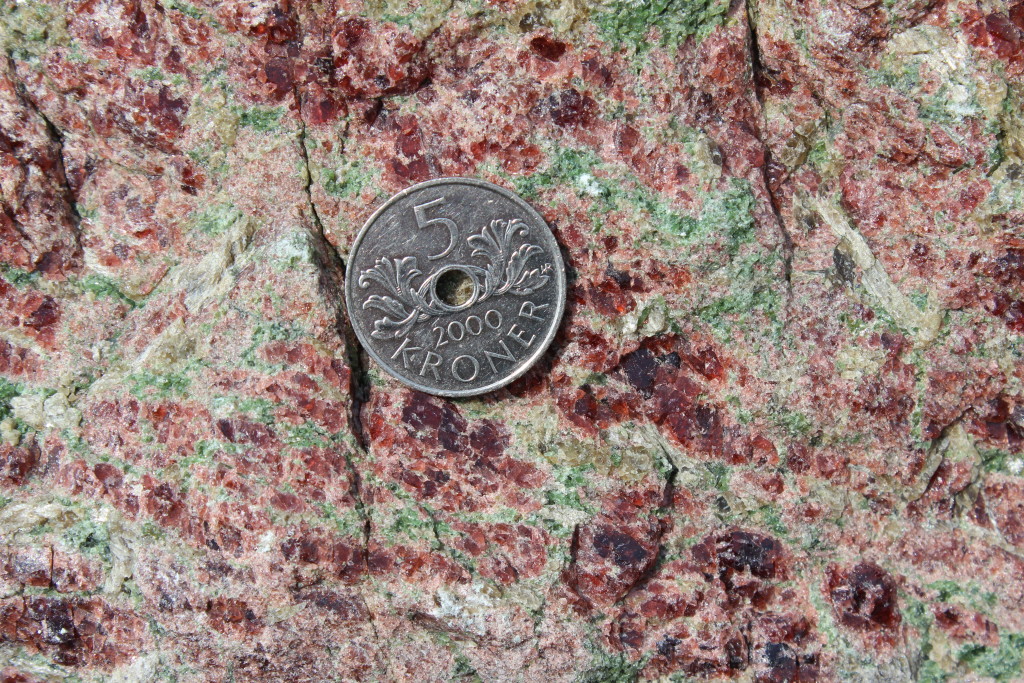
Fresh face of coesite-eclogite showing classic “Christmas”-colored minerals: Garnet (red) + Omphacite (bright green) + minor quartz (colorless). There is also a yellow-green elongate mineral that may be clinozoisite or sphene (chime in if you know!). The reaction, Plagioclase + Olivine + Diopside = Omphacite + Garnet + Quartz, describes the production of these minerals in a basaltic composition rock at pressures above 1.2 GPa (>45 km depth), thereby defining eclogite-facies metamorphism. The coesite (not seen here, but in thin section) doubles the minimum pressure boundary for metamorphism of these rocks!
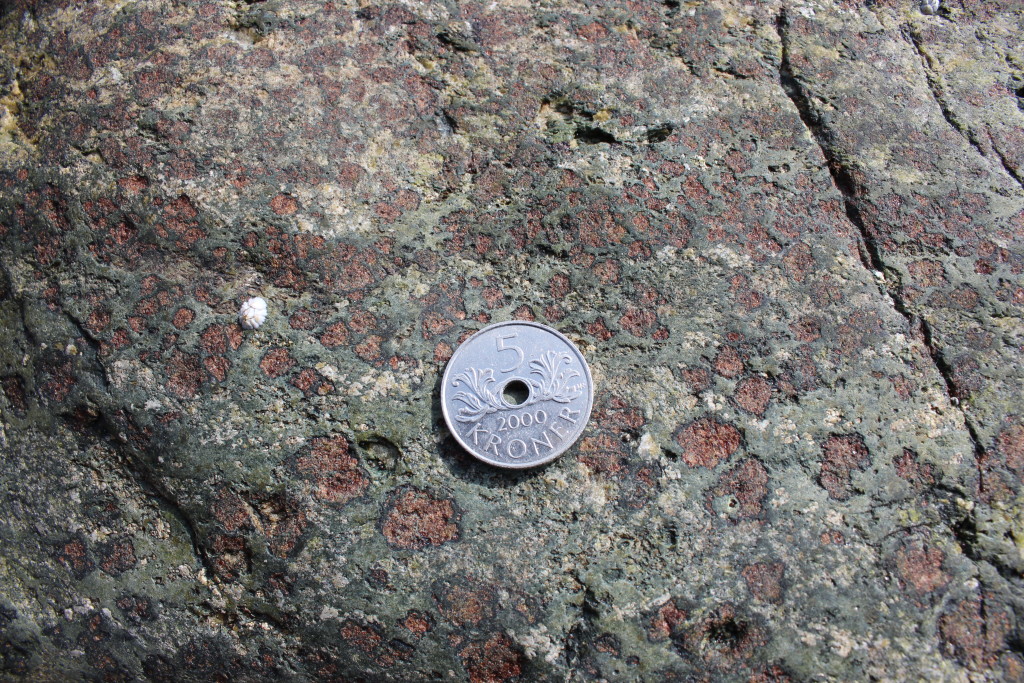
Weathered face of coesite-eclogite showing plagioclase+hornblende symplectite reaction rims (retrogressive amphibolite-facies metamorphism) (black) around garnet (red), plus abundant clinopyroxene (green).
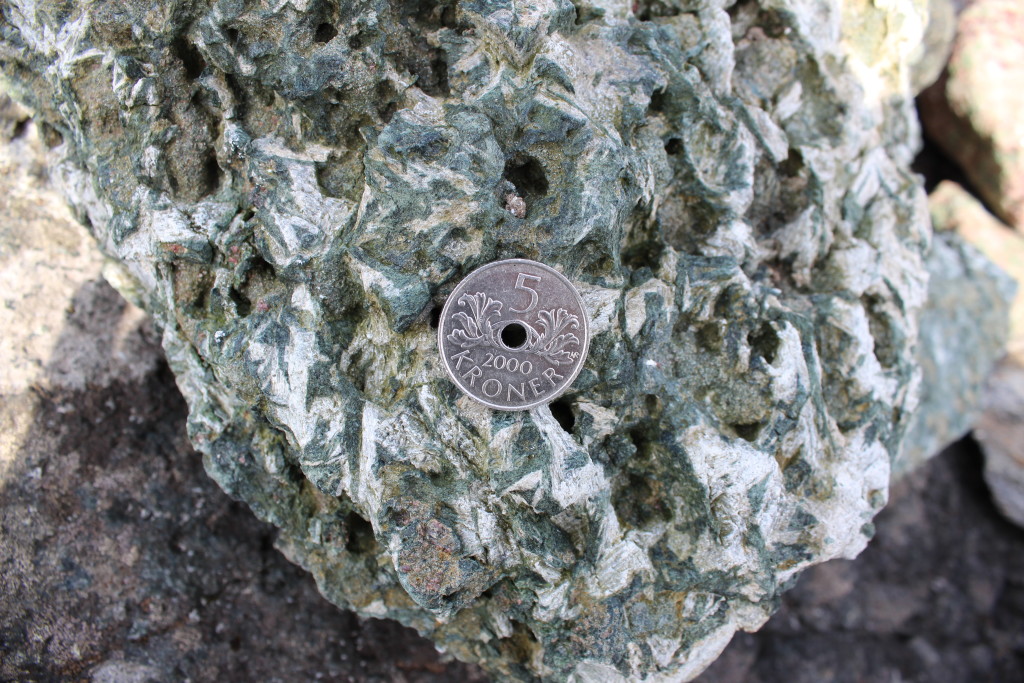
A metasomatized (silicified) piece of the mantle (garnet websterite)! Serpentine (white) + talc (white) + pyroxene (green) + magnesite? (white) + minor garnet (red).
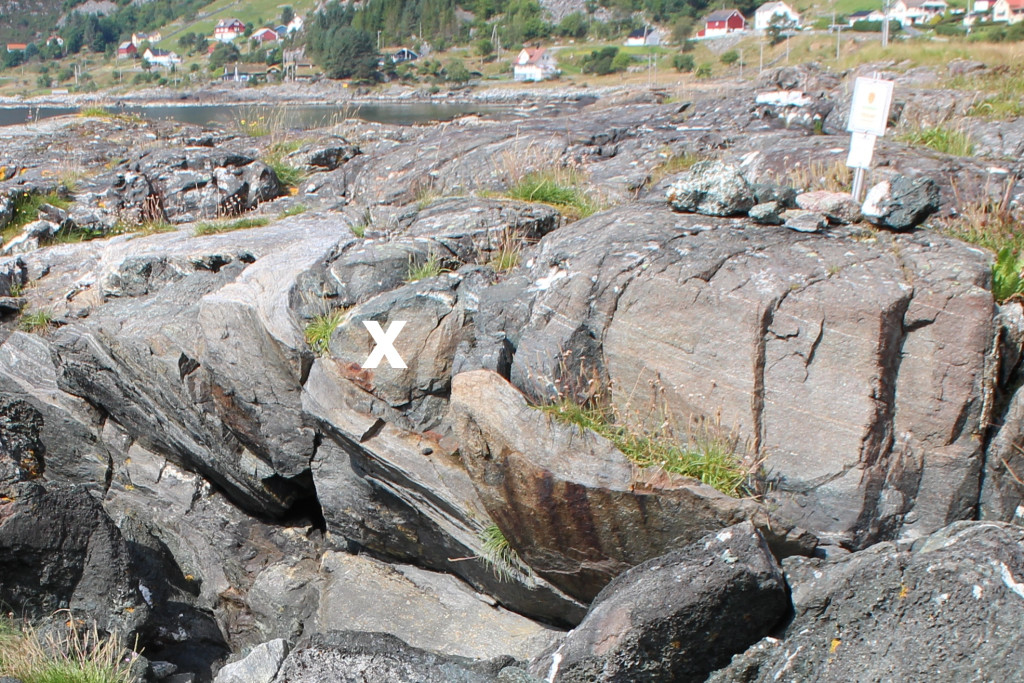
David Smith’s (1984) coesite-eclogite locality (X marks the spot!) at Grytting in Selje, Norway. Sign indicates this is a protected geologic site, no sampling of even loose material! The post is placed into the coesite-bearing eclogite. A body of Eskola’s (1921) magnesite-pyroxene eclogite is just beneath the coesite-eclogite, separated by foliated gneiss (white) that nearly pinches out between the two eclogite types.
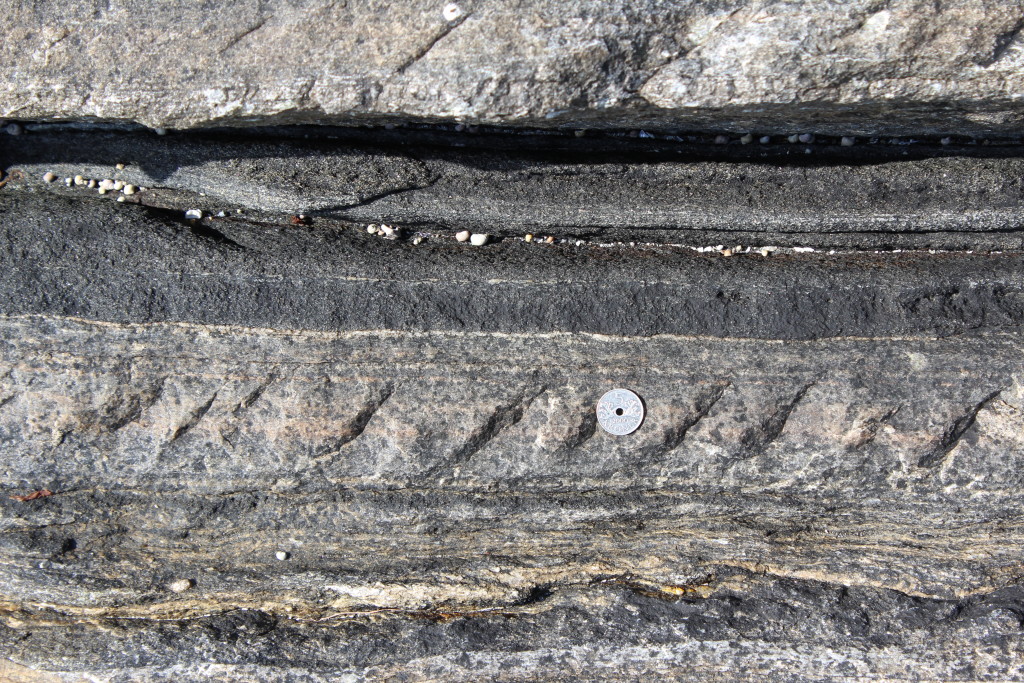
En echelon fractures forming only in the more feldspathic gneiss layers because of rheological contrasts
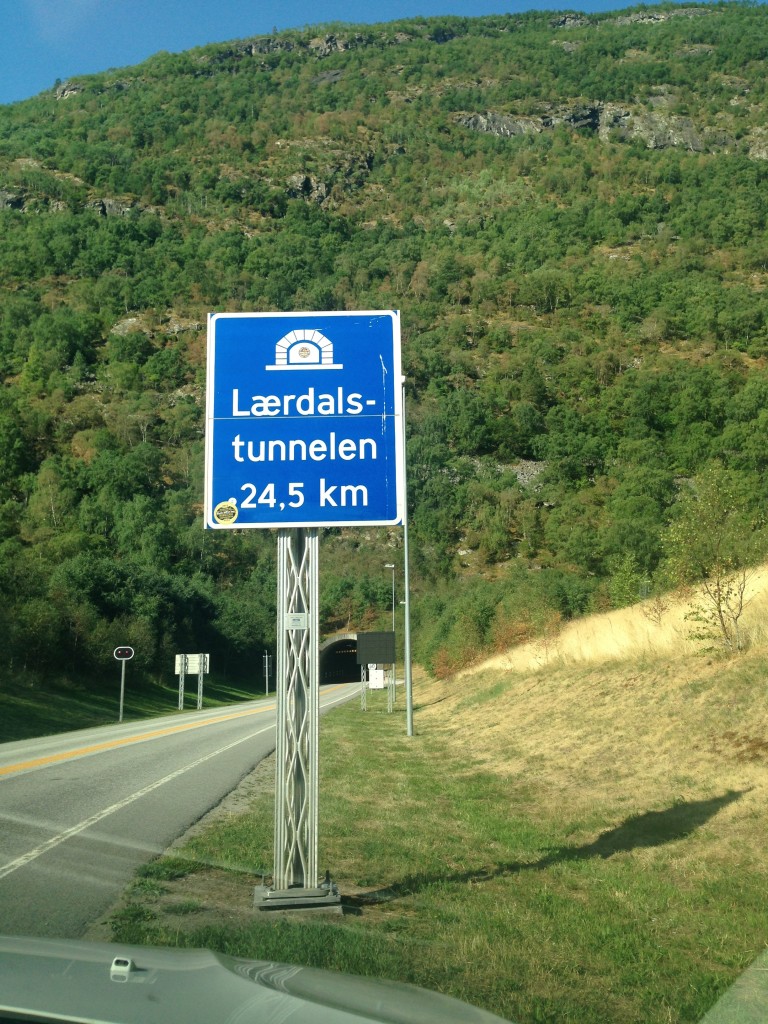
Entrance to the longest road tunnel in the world: the Laerdal Tunnel. The Norwegians have mastered the art of tunnel-building. This one, they feared, was so long it might induce mental strain, depression, or claustrophobia, so they split it into four sections with mood lighting that are punctuated by large cavernous openings where drivers can pull over and break the monotony.
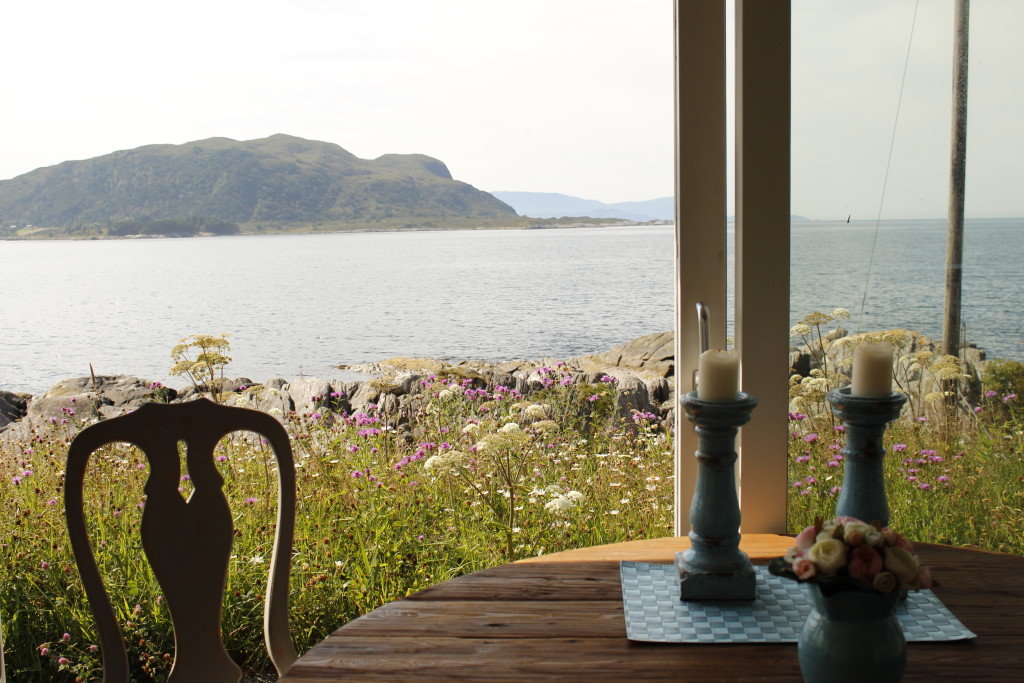
Window view of Selja island, where Saint Sunniva took refuge over one thousand years ago (~950 AD), making the island a site of ancient pilgrimage, and where the ruins of Selje Abbey (built in 1100 AD) can still be seen.
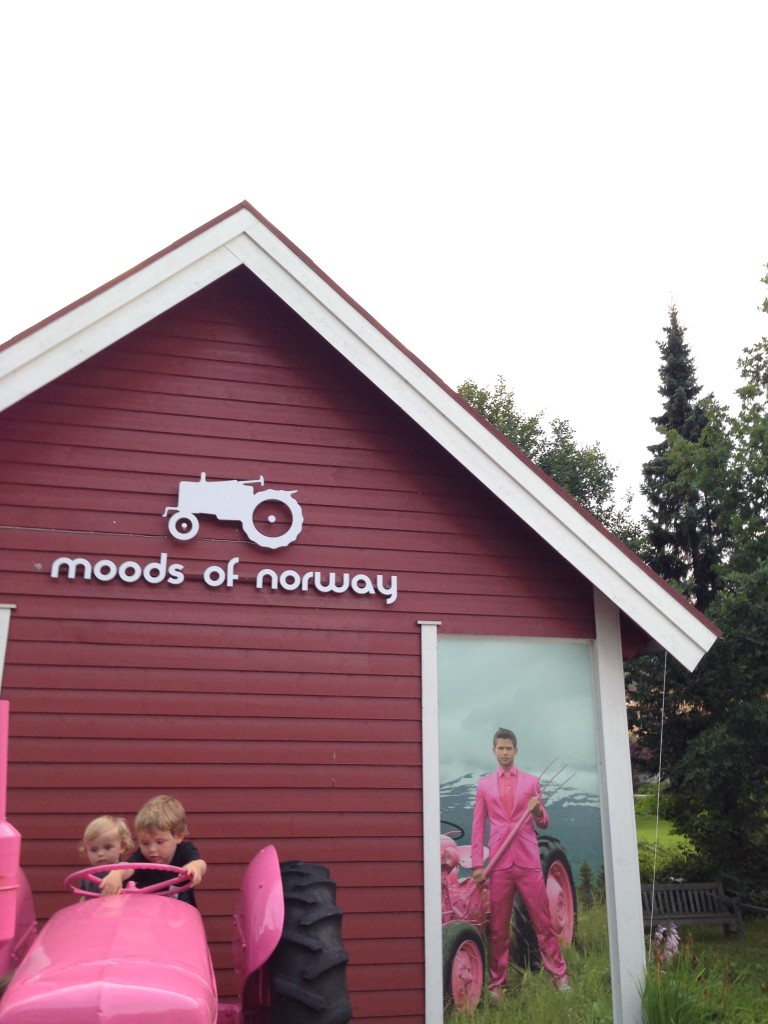
Norwegian fashion pays homage to its farmland heritage here at the headquarters for Moods of Norway in rural Stryn.
![]() This work is licensed under a Creative Commons Attribution-NonCommercial-ShareAlike 4.0 International License.
This work is licensed under a Creative Commons Attribution-NonCommercial-ShareAlike 4.0 International License.

